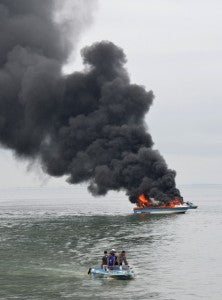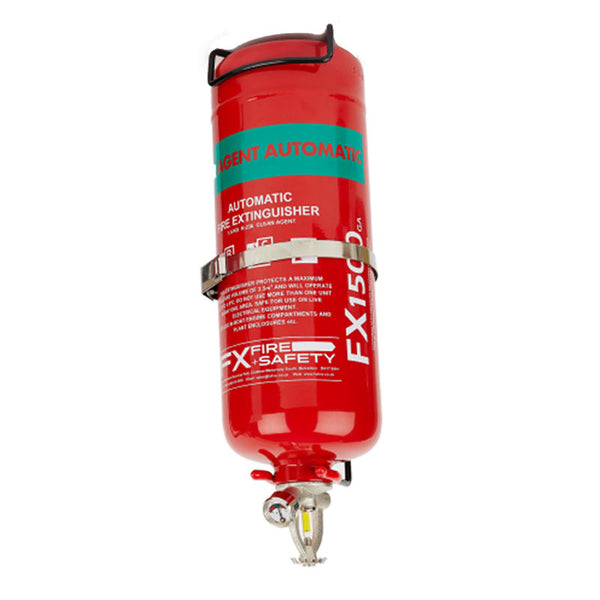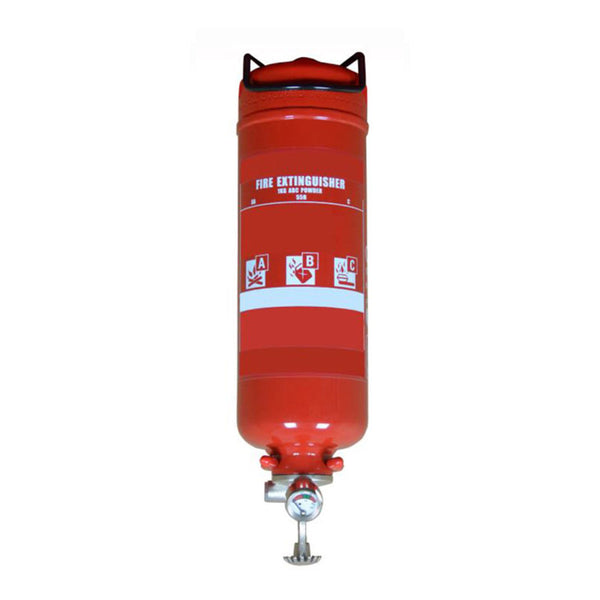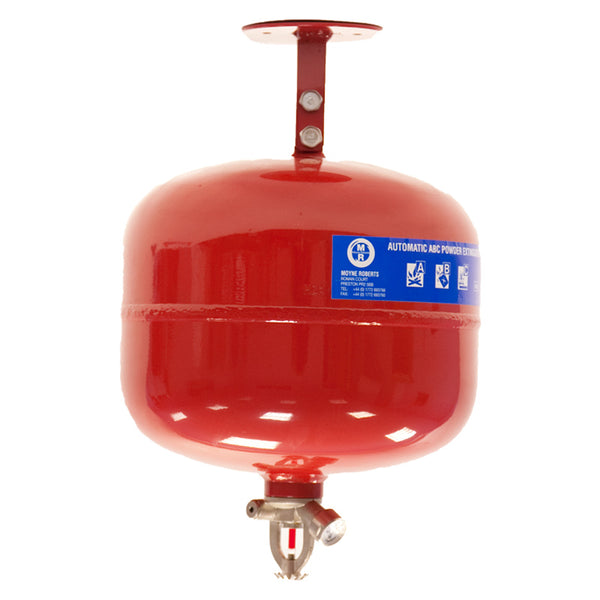Damage caused by fires and the smoke are minimised when the fire is fought quickly and effectively – and that’s vital in areas such as IT server rooms, spaces containing delicate and important plant and equipment, and even boats, where fires can rapidly cause collateral damage to vessels moored nearby.
Fire and Safety Centre explains what automatic fire extinguishers are, how they work, and advises on selecting the right one.
The lifetime’s work of a service soldier went up in flames. This happened when a fire started in the boat, clouds of thick dark smoke filled the air. He had lavished years of care and attention on his prized possession. However it wasn’t only his boat that was damaged; but neighbouring ones as well, reported by the media outlet Bay News 9. Although this incident was at St Petersburg in America where three boats had caught fire at Bay Pines Marina the accompanying report shows just how devastating the fire was.
A similar incident has happened in the UK too. A marina fire saw two boats go up in flames, and in an entirely separate incident a fan heater warning was issued as a fan heater left unattended aboard a boat caused a fire. The latter event was at St Katherine’s Docks, a popular marina in a heavily-populated area surrounded by restaurants and cafes in the shadow of London’s Tower Bridge.
And it’s this latter scenario that highlights the value of an automatic fire extinguisher on a boat. In the most popular marinas the crowding together of vessels does two things: it makes it hard for fire fighters to get to the scene of the fire, and simultaneously presents opportunities for the fire to spread quickly.
Think of the Great Fire of London in 1666, featured previously in our blog entitled “Why the Great Fire of London matters to you today” The fire spread because so much readily combustible material was squeezed into such a tight space. And this combination of circumstances makes an automatic fire extinguisher ready and waiting within the space, a perfect solution. Unfailingly alert and already on the scene, it can snuff out fires in the shortest-possible time.
But it’s not just boats where this ‘ever-ready technology’ can have such a positive impact. Consider the heavy reliance we share on computer technology. All of that power and potential is concentrated in server rooms – even ‘cloud’ computing uses earthbound servers in huge numbers – which are permanently ‘on’. The amount of business and personal data stored on servers is colossal; the potential cost of its loss is even larger.
What is an automatic fire extinguisher?
It’s a permanently-fixed extinguisher filled with a fire suppressant material which is suitable to what it’s protecting. The container is pressurised, and the pressure, along with the contents, escapes when a heat-sensitive bulb breaks.
The fire suppressant material can be dry powder, which is suitable for use on fires of Class A, B or C, as well as electrical equipment. In clean locations, it’s possible to have a fire extinguisher filled with ‘clean agent’ material that leaves no residue, so there is no damage to the equipment being protected.
The fire suppressant material can be dry powder, which is suitable for use on fires of Class A, B or C, as well as electrical equipment. In clean locations, it’s possible to have a fire extinguisher filled with ‘clean agent’ material that leaves no residue, so there is no damage to the equipment being protected.
All automatic fire extinguishers are designed to fight fires within specific areas or volumes, so it’s important to check that the one you’re buying is an appropriate size for the area in question.
The tiniest area there’s an automatic extinguisher for is this lettergard protected letterbox. It contains a 100gm extinguisher whose capability potential is activated at 57 degrees Centigrade.




